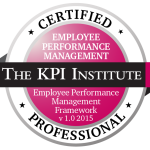General Overview:
Every organization undoubtedly has a vision it aims to achieve, a mission it strives to fulfill, and a set of strategic objectives. To assess whether these strategic objectives are being achieved, it is imperative for the organization to have a set of key performance indicators (KPIs) that measure the attainment of these objectives, in addition to measuring the quality of inputs, processes, and products. Therefore, the role of KPIs in management is maximized, as the correct identification of key performance indicators provides a comprehensive picture and enables management to address problems and their causes accurately, thus saving many resources. Moreover, these indicators can provide corrective actions and initiatives that enable the organization or management to achieve the set targets. Furthermore, the prevalence of a culture of KPIs in the organization enhances communication among individuals and fosters a type of collaboration to achieve the desired performance and continuously enhance the organization’s performance.
Training Objectives:
1. Understanding the importance of performance measurement in management science.
2. Differentiating between measures and key performance indicators.
3. Knowing the types of key performance indicators and benefiting from classification.
4. How to create balanced scorecards.
5. Steps to identify key performance indicators for the organization.
6. Identifying key performance indicators for departments and individuals.
7. Effective visualization of indicators.
Target Audience for this Course:
– Senior management positions in companies.
– Executive Directors.
– Performance Managers.
– Administrative Consultants.
– Heads of Administrative Development Teams.
– Those interested in working in the field of key performance indicators.
Topics to be Covered:
– The importance of key performance indicators.
– Obstacles to performance measurement.
– Difference between measures and key performance indicators (Metrics Vs KPI).
– Types of key performance indicators and their benefits (KPI types).
– Balanced Scorecards.
– KPI card and its components (KPI template form).
– Steps for selecting the indicator (KPI selection).
– Logic Model.
– Identifying organization, department, and individual indicators.
– Data visualization (dashboard).






